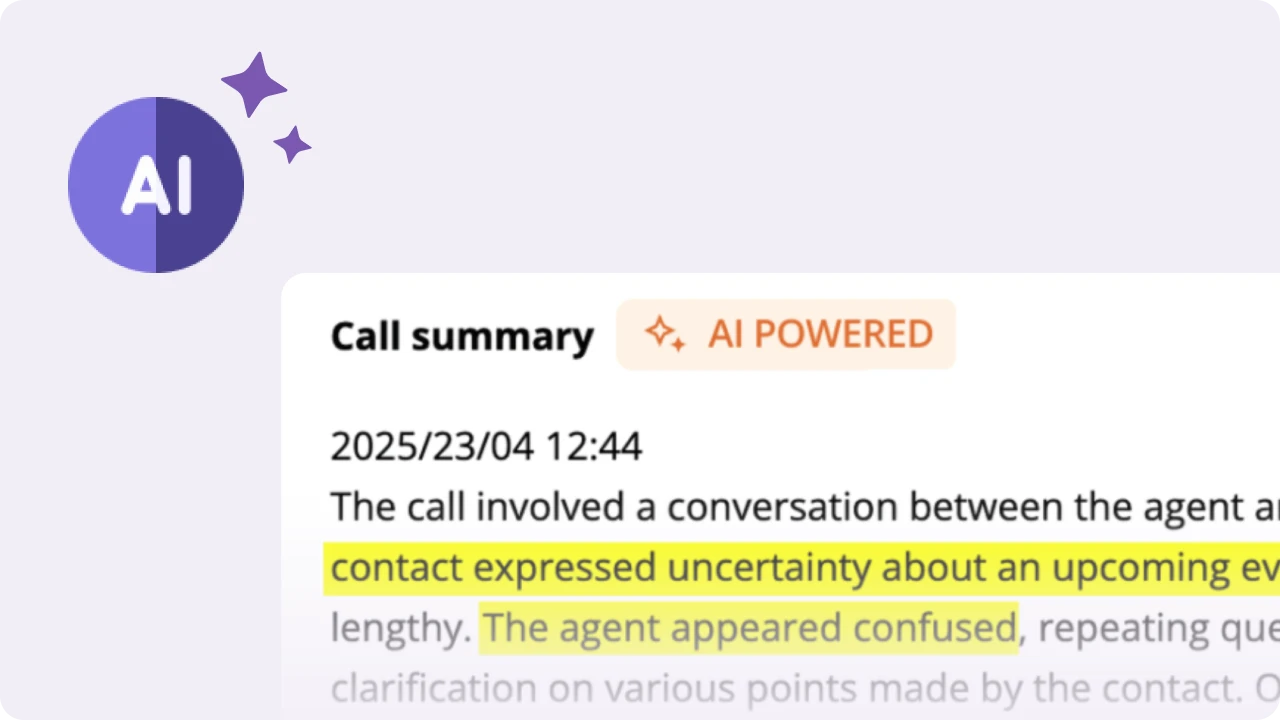Table of Contents
Data is the lifeblood of modern advocacy. Without data-driven advocacy, we’re just shouting into the void.
While intuition has its place, simply relying on it is not enough. A survey found that 41% of executives rely more on intuition than data and analytics when making decisions. Advocacy professionals like Jill Piebiak and David Karpf stress the importance of data for capturing attention, influencing policy, and building power.
Organizations must be able to track key performance indicators (KPIs) by transitioning from gut-driven to data-driven advocacy. But how? This blog dives deep into the kind of data your advocacy should track and shows you how.
Data-driven advocacy: How to measure campaign success
Success in advocacy depends on your goals—whether it’s a legislative win, more constituent calls, or email signups. The key is a data-driven advocacy approach, using the right KPIs and metrics at each campaign phase. Here we have broken it down for you phase-wise:
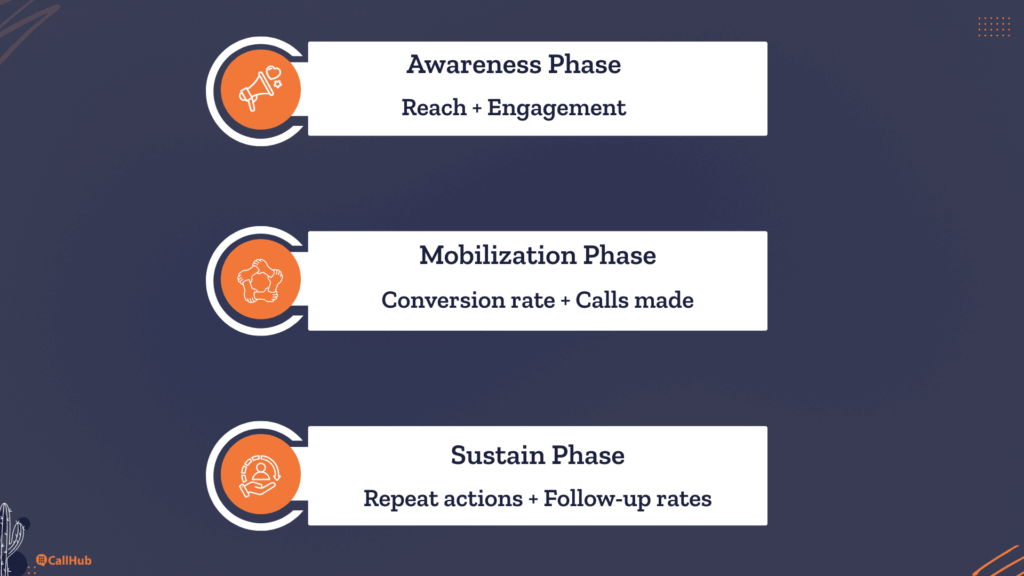
• Awareness phase
This is where we build visibility and grow our base of supporters. We use advocacy campaign analytics to assess how far our message goes and how well it’s landing, based on
- Reach: How many unique people see our content—through ads, social media, email, or press?
- Engagement: Look at time spent, click-through rates (CTR), responses to texts and emails, and website traffic to see if we’re striking a chord.
• Mobilization phase
Once we’ve built awareness, it’s time to activate supporters. Here, we’re watching for real-world actions—what we’d consider conversions in data-driven campaign strategies, using:
- Conversion rates: What percentage of people are taking the next step—signing petitions, RSVPing for events, etc.,
- Calls made: The number of calls supporters make to legislators indicates the effectiveness of outreach efforts.
• Sustain phase
Driving change takes persistence. In data-driven advocacy campaigns, we track if supporters stay active and if we’re influencing decision-makers through:
- Repeat actions: How many people are taking multiple actions over time? Repeated engagement is a strong sign of deep commitment.
- Follow-up rates: Are supporters responding to second or third asks? This metric tells us how well our engagement pipeline is working.
By clearly defining success at each stage and aligning with key performance indicators for advocacy, we can set measurable goals, adjust in real time, and focus on what truly drives impact. That’s the power of knowing how to measure advocacy success—it keeps your efforts strategic and scalable.
Now, let’s break it down further with channel-specific metrics.
Key metrics for data-driven advocacy (channel-based)
Here’s a structured table highlighting key performance indicators (KPIs) for various communication channels, helping you focus on advocacy KPIs and metrics that drive meaningful engagement and outcomes:
| Channel | Key Metrics |
| Text broadcast | 📬 Delivery rate 🔗 Click-through rate (CTR) ❌ Opt-out rate |
| Peer-to-peer texting | 💬 Response rate ✅ Conversion to action 🏷️ Tags used |
| MMS/RCS | 👀 Read rate 🔗 Link taps 🎞️ Media engagement |
| Phonebanking/Autodialers call metrics | 📞 Connection rate ⏱️ Average call duration 📝 Outcomes logged |
| Click-to-call performance | 📲 Calls initiated 🔁 Patch-through rate |
| 📧 Open rate/Click rate 📝 Form fills 💰 Donations made | |
| In-person | 👥 Attendees 🤝 Follow-up engagement 🙋 Volunteer conversion |
By focusing on these key advocacy campaign metrics, you can ensure that your outreach efforts are measurable and impactful, driving real engagement and outcomes for your advocacy goals.
Read also: The new advocacy guide will improve your cause.
Set up your infrastructure for a complete picture.
When it comes to data-driven advocacy, having clean, connected data is the backbone of effective outreach—it helps you skip the guesswork and make every conversation count.
CallHub connects with leading advocacy CRMs like NGP VAN, NationBuilder, Salesforce, and more, so your supporter data can move freely between platforms. That information includes whether someone donates, signs up for an event, or joins a calling campaign. No more copying and pasting between systems.
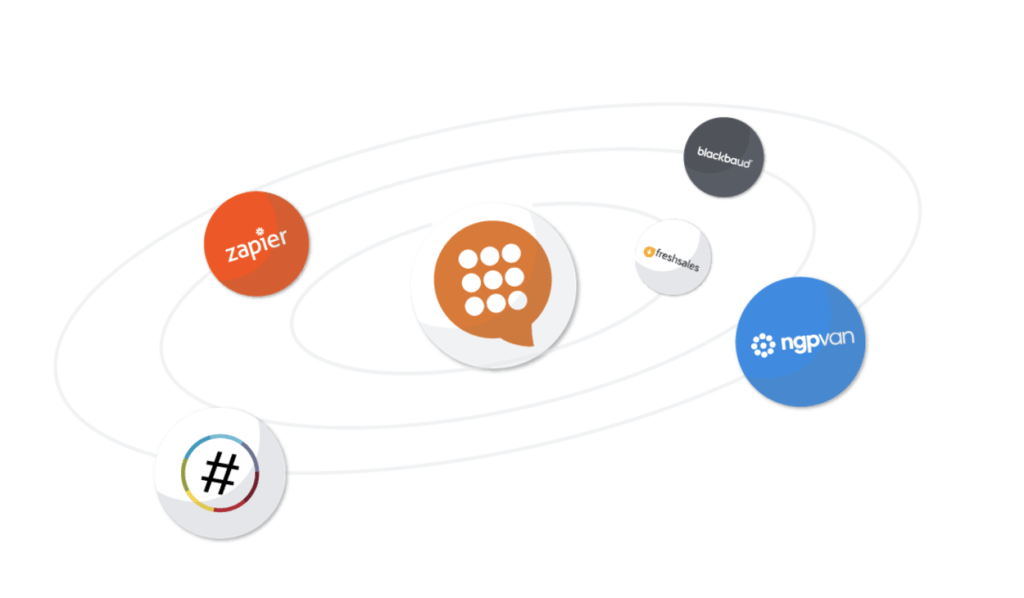
When everything’s connected, you can:
- Avoid duplicate or outdated contact info
- Track supporter activity across all channels
- Personalize outreach with full context
And it works—CRM-integrated campaigns in advocacy can increase conversion rates by 300%.
Once your data is synced, it’s time to group your contacts in ways that help you reach them better, not just by location or age, but by how they engage with your campaign.
Here’s how you can segment in CallHub:
- Engagement level
- Preferred channel
- Past actions
The more relevant your message, the more likely they are to act.
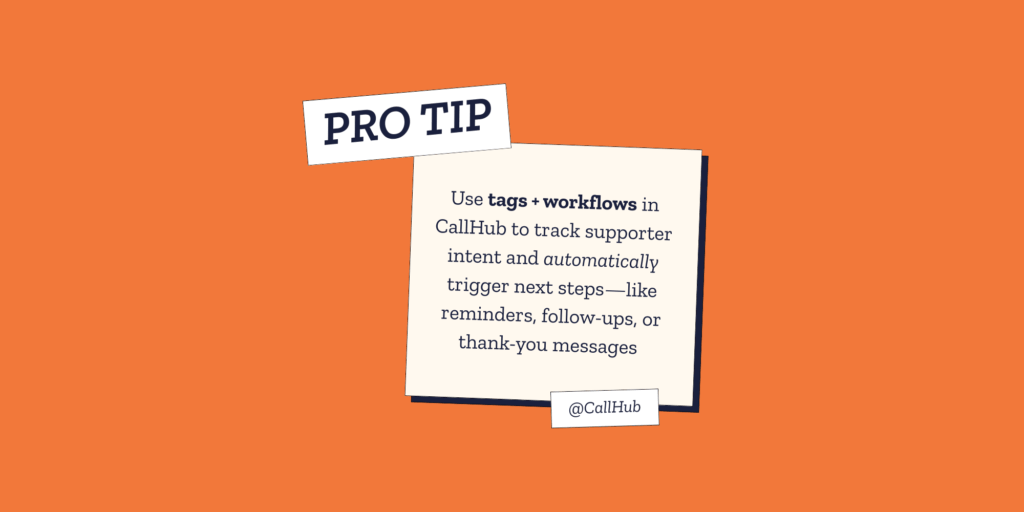
Automate and build effective feedback loops
Incorporating workflow automation into your outreach strategy streamlines processes and creates a dynamic feedback loop that enhances engagement and efficiency.
With the global workflow market expected to reach $38.5 billion by 2025, it’s clear that automation is becoming increasingly essential. Here’s how you can implement this using CallHub:
Workflow automation 1:
P2P Message → Reply “Yes” → Tag: Volunteer interested | Else → Tag: Volunteer not interested
This workflow starts with a personalized message via P2P. If the contact replies “Yes,” they’re automatically tagged as Volunteer-Interested.
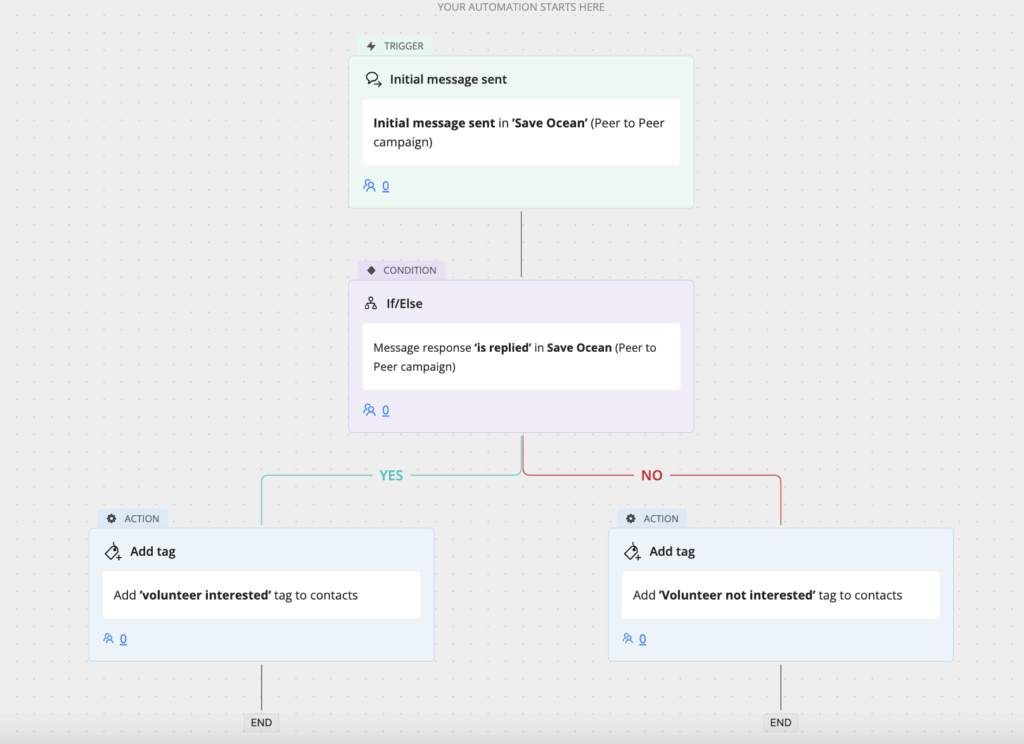
Workflow automation 2:
Volunteer-Interested → Send onboarding link
- Once tagged as interested, the contact automatically receives an onboarding link via SMS.
- This link contains prompts to sign up, allowing you to track clicks, sign-ups, and optimize your CTA performance.
Tracking your contacts’ journey from first touch to final action helps refine messaging, timing, and channel selection for more personalized campaigns.
Studies show that workflow automation advocacy reduces operational costs by 25% and error rates by 18%, ensuring no lead is left behind.
Optimize campaigns in real-time with data-driven advocacy.
Real-time optimization swiftly empowers campaigns to adjust based on immediate data, enhancing engagement and maximizing ROI. Here’s how:
- Don’t launch and pray.
Abandon the “set it and forget it” mindset. Instead, continuously monitor campaign performance and make timely adjustments to improve outcomes. Use CallHub’s data-driven advocacy dashboard, with advocacy KPIs and metrics like the number of messages sent, received, and the number of times contacted.
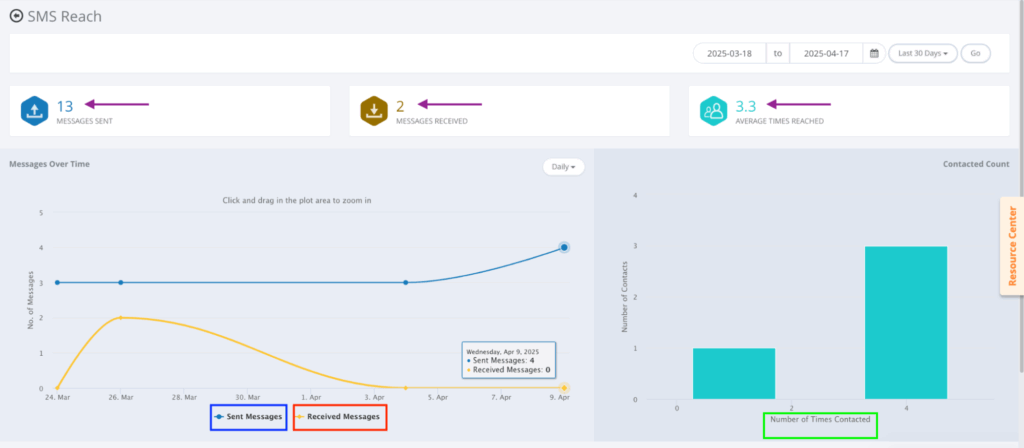
This centralized view allows campaign managers to identify underperforming areas promptly and implement strategic changes, ensuring campaigns remain effective and aligned with objectives.
Read Also: Your Complete Political Advocacy Guide For Grassroots Campaigns
- Adjust channel timing
Optimizing the timing of your outreach can significantly impact engagement. For instance, analyzing when your audience is most responsive by segmenting the data by ‘call disposition’ on CallHub campaign reporting tools and scheduling communications during peak periods, enhancing effectiveness.
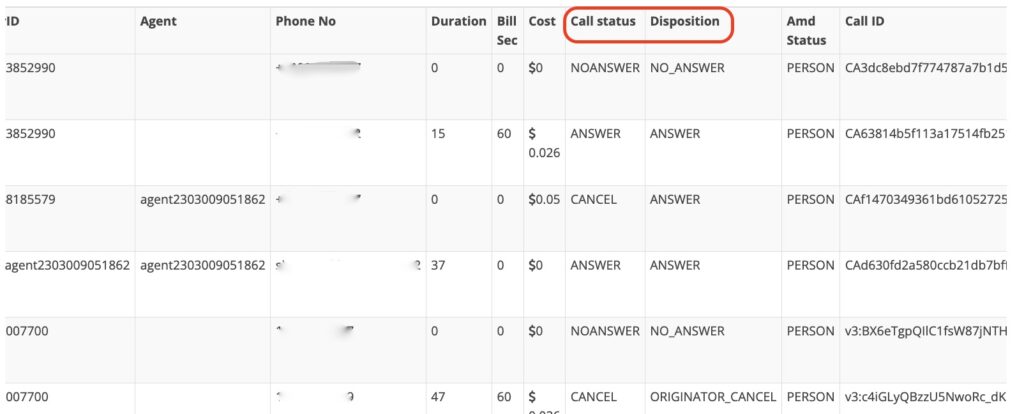
- Retarget low performers
Re-engage audiences who didn’t respond initially by altering your outreach strategy.
- Ignored SMS? Try a call or auto-retry
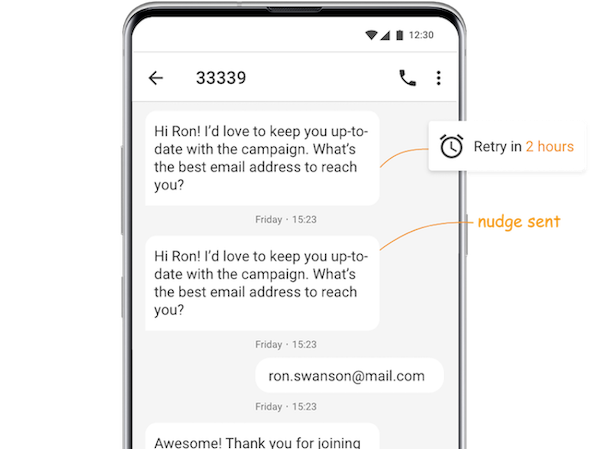
If a supporter doesn’t respond to your initial SMS, CallHub’s auto-retry feature automatically resends the text message again as per your settings, boosting your chances of connecting.
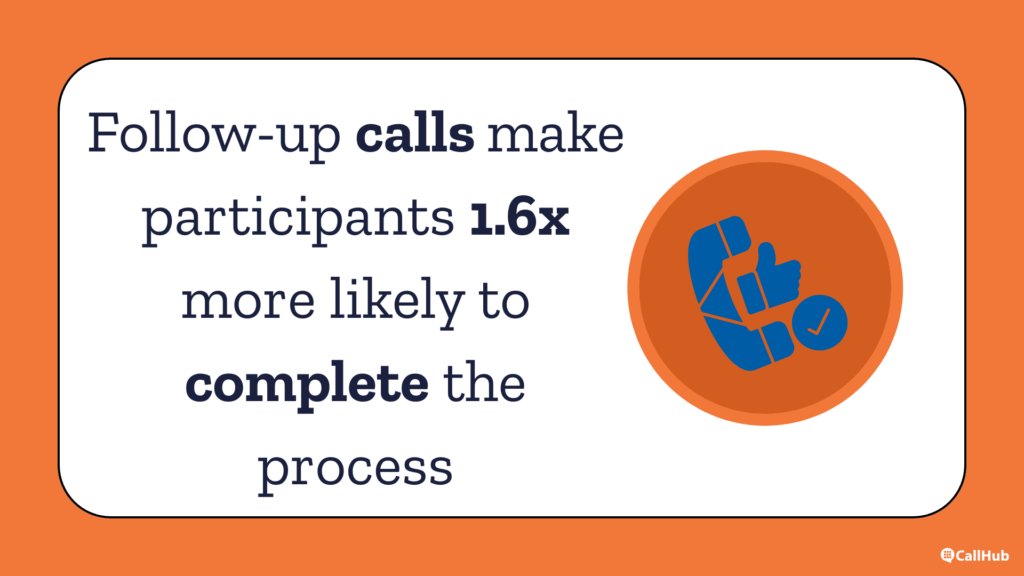
If a supporter doesn’t respond to your SMS at all, following up with a phone call can provide a personal touch that encourages engagement. In data-driven advocacy campaigns, this direct approach can be instrumental in mobilizing supporters. Research indicates that participants who received follow-up phone calls after initial contact are 1.6 times more likely to complete the follow-up process.
- Bounced email? Try MMS
As the trend says, email open rates have decreased by 8.2%. During such a decline, use MMS to send visually engaging messages directly to recipients’ phones. Incorporating compelling images can capture attention and convey your message more effectively, which is particularly beneficial in advocacy efforts where visual storytelling can drive action.
Numbers, numbers, and only numbers to show your impact
In data-driven campaigns, measuring advocacy impact is essential, not just for internal strategy but to rally support from funders, stakeholders, and the public.
It’s not enough to say what you did; you must show what it led to.
For example, an advocacy campaign sent 10,000 text messages. That led to 2,500 replies, prompting volunteers to make 1,300 follow-up calls. As a result of that pressure, four lawmakers flipped their vote in favor of the cause.
Don’t just report actions—show the ripple effect.
Case study: CARE International
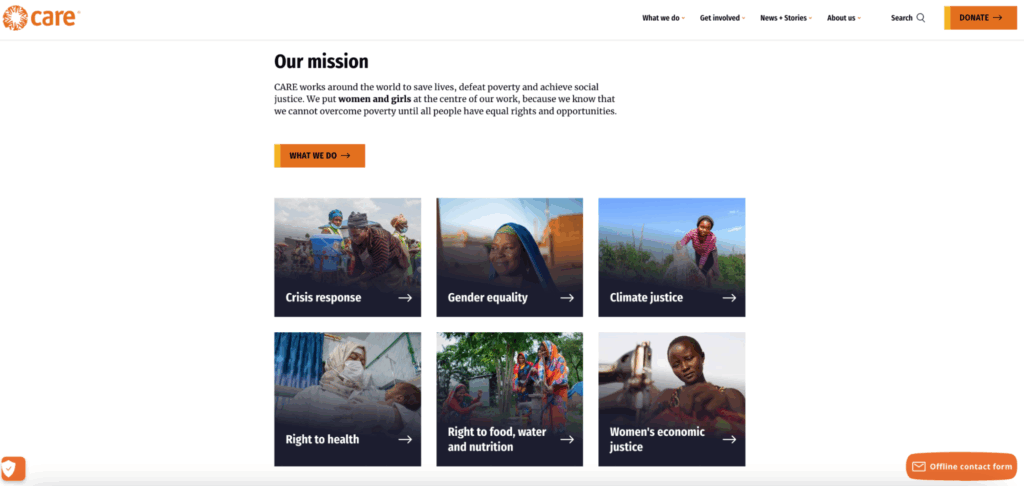
| CARE International’s advocacy efforts contributed to the U.S. Congress allocating nearly $1 billion in supplemental funding for emergency famine relief during fiscal years 2017 and 2018. This funding supported at least 50.8 million crisis-affected people with humanitarian assistance, based on numbers reported by USAID. Such grassroots campaign data demonstrate the tangible impact of advocacy initiatives and are crucial for maintaining and increasing stakeholder support. |
This storytelling connects the dots between effort and outcome, perfect for motivating supporters and proving the impact you have created.
CallHub brings together your data and helps you centralize it for easy access:
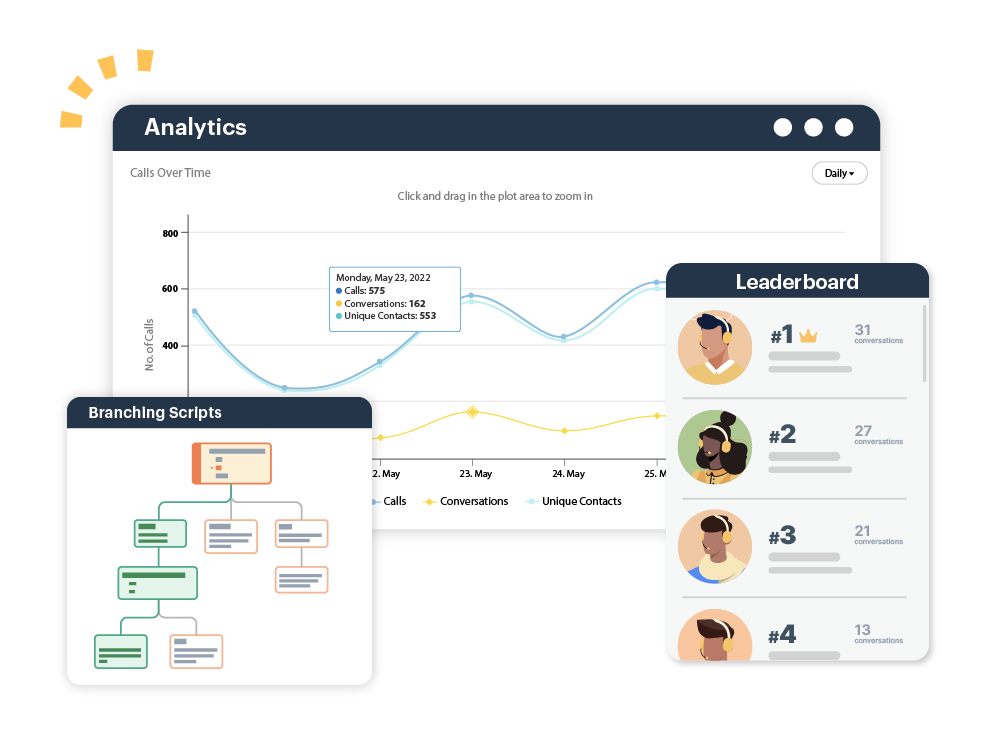
Use CallHub campaign reporting tools and dashboard + CRM exports to present a whole story to funders, boards, and the media.
Read Also: The ultimate advocacy toolkit to empower your cause
Bonus: Reporting tips for teams
Enhancing campaign performance relies heavily on how well teams track and act on data. To make the most of your reporting processes, consider implementing the following tips:
| Tip | Purpose | Implementation |
| Set weekly campaign health check-ins | Monitor progress and address issues promptly. | Schedule brief weekly meetings to review goals and challenges. Start with open-ended questions like, “What’s one thing you want to discuss this week?” |
| Assign a data lead per campaign | To ensure data accuracy and accountability. | Designate a team member to oversee analysis and reporting for each campaign. |
| Use shared dashboards | Promote transparency and streamline reporting. | Utilize CallHub’s campaign analytics dashboard to monitor real-time performance. Share reports in PDF, CSV, or Excel formats for easy distribution. |
| Build a Culture of ‘Test → Learn → Tweak’ | Foster continuous improvement through experimentation. | Encourage teams to test new strategies, analyze results, and make iterative adjustments based on data-driven insights. |
Read Also: Here is your grassroots advocacy 101 guide for an activist
To wrap-up
Here is a well-crafted KPI checklist for you to monitor and optimize your campaign performance across various channels:
| ✅ Campaign KPI Checklist |
| 📩 SMS Broadcast • Messages Sent • Messages Received • Delivery Rate • Links clicked • Opt-Out Rate |
| 💬 Peer-to-Peer Texting • Conversations Initiated • Responses Received • Average Response Time • Agent Engagement Rate |
| 📞 Voice Broadcast • Calls Placed • Calls Answered • Unique Contacts Reached • Average Call Duration |
| 👥 Agent Performance • Active Agents • Calls per Agent • Agent Retention Rate • Agent Satisfaction Score |
Want to know exactly what’s working—and fix what isn’t? With CallHub’s campaign reporting tools, you can track every message from first send to outcome.
For even deeper insights, opt for our exclusive Metabase feature, offering advanced filters and detailed dashboards to elevate your campaign strategy.
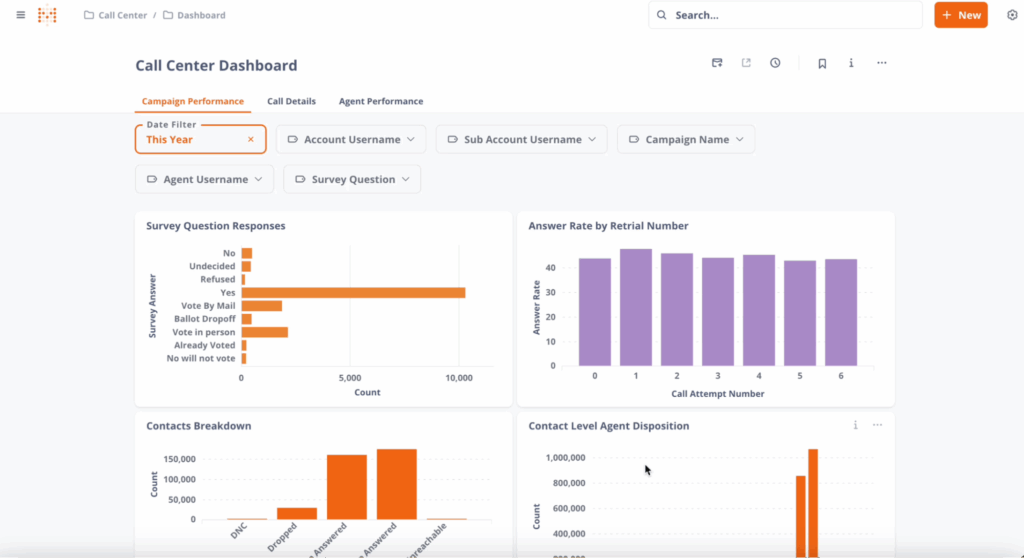
Book a demo with CallHub to explore how these tools can transform your campaign tracking and performance.


